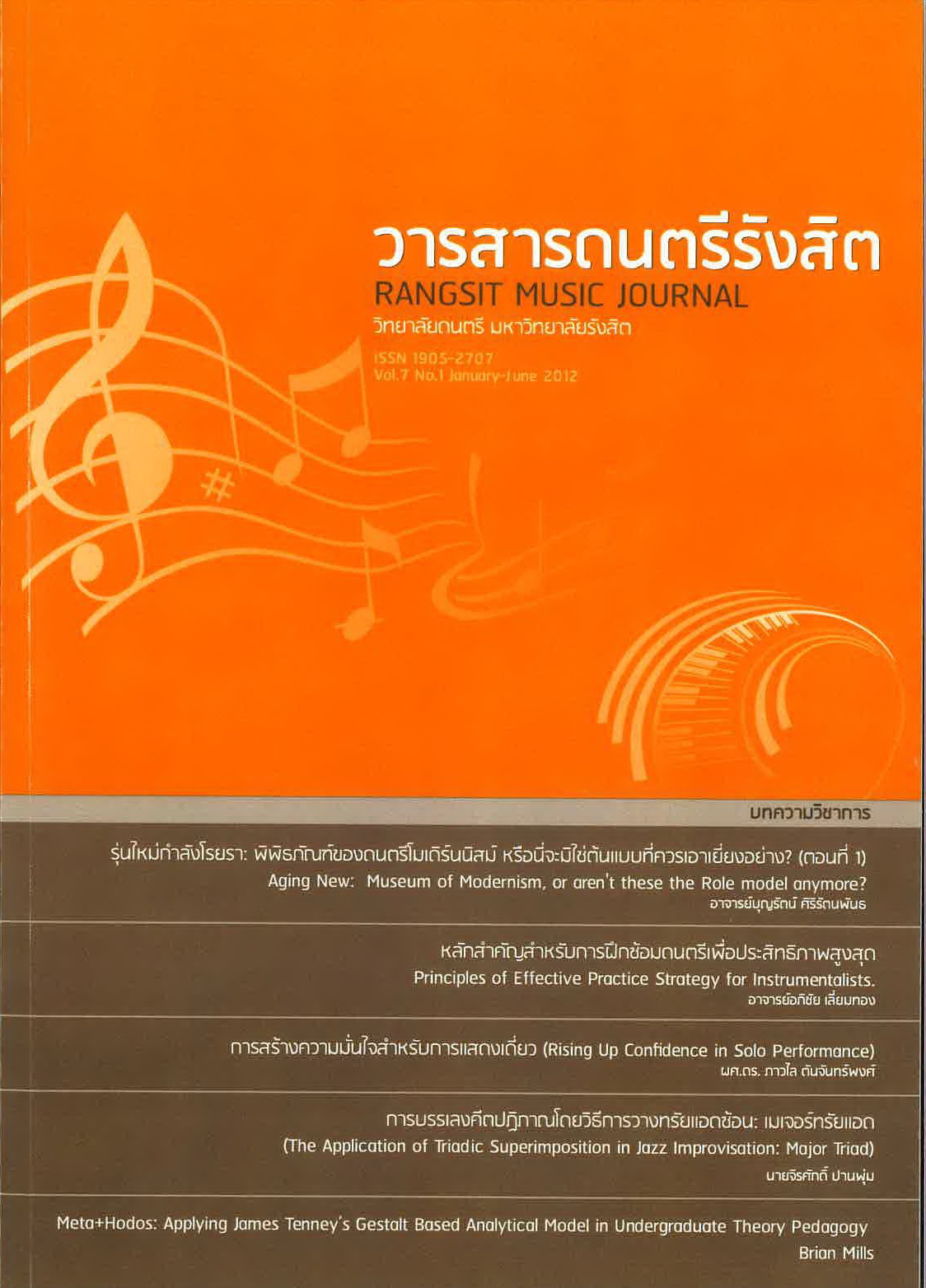Meta+Hodos: Applying James Tenney's Gestalt Based Analytical Model In Undergraduate Theory Pedagogy
Keywords:
James Tenney, Theory Pedagogy, Meta HodosAbstract
To this day, undergraduate theory curriculum is primarily concerned with information related to the form defining elements of functional harmony. Students are taught to analyze harmonic context and pitch relationships almost to the exclusion of all other factors. However, contemporary and modernist compositions frequently rely far less on pitch relationships as primary form creating devices. Other parameters take on greater significance. Even as pitch remains a critical element in serial and set related music, a method of drawing attention to non-pitch or non-functional harmonic structures is crucial to a more complete understanding of the form and comprehension of post-tonal music. As a potential remedy, this article explores the possible utilization and merits of James Tenney's gestalt based analytical model presented in his book Meta+Hodos. Within the context of this paper, his insights into gestalt theory will be used as an attempt to clarify and describe perceived aural phenomena from which a more comprehensive interpretation of non-tonal music may follow.
References
2. Ellis, Willis, D., ed. A Source Book of Gestalt Psychology. New York, NY: Humanities Press, 1997.
3. Koffka, Kurt. Principles of Gestalt Psychology. London: Routledge &Kegan Paul Ltd., 1962.
4. Kohler, Wolfgang. Introduction to Gestalt Psychology. New York, NY: New American Library, Mentor Books, 1959.
5. Radocy, Rudolf and J. David Boyle. Psychological Foundations of Musical Behavior. Springfield, IL: Charles C. Thomas Pub., Ltd., 2003.
6. Ramachandran, VS. The Tell-Tale Brain: A Neuroscientist's Quest for What Makes US Human. New York: Norton & Company, 2011.
7. Ramachandran, VS. and William Hirstein. "The Science of Art. A Neurological Theory of Aesthetic Experience." Journal of Consciousness Studies, 6, No. 6-7 (1999): 15-51.
Downloads
Published
How to Cite
Issue
Section
License
กองบรรณาธิการฯ สงวนสิทธิ์ในการพิจารณาและตอบรับการตีพิมพ์ ความรับผิดชอบใดๆ เกี่ยวกับเนื้อหาและความคิดเห็นในบทความเป็นของผู้เขียนต่อบทความนั้นๆ กองบรรณาธิการฯ ไม่ต้องรับผิดชอบ



